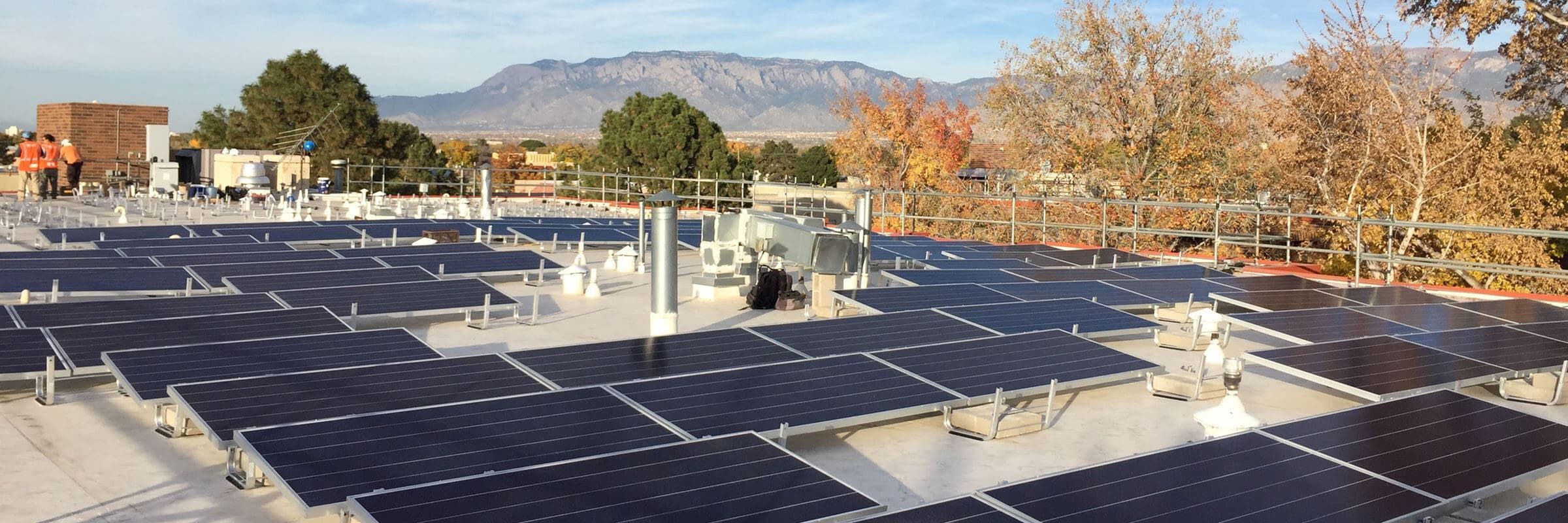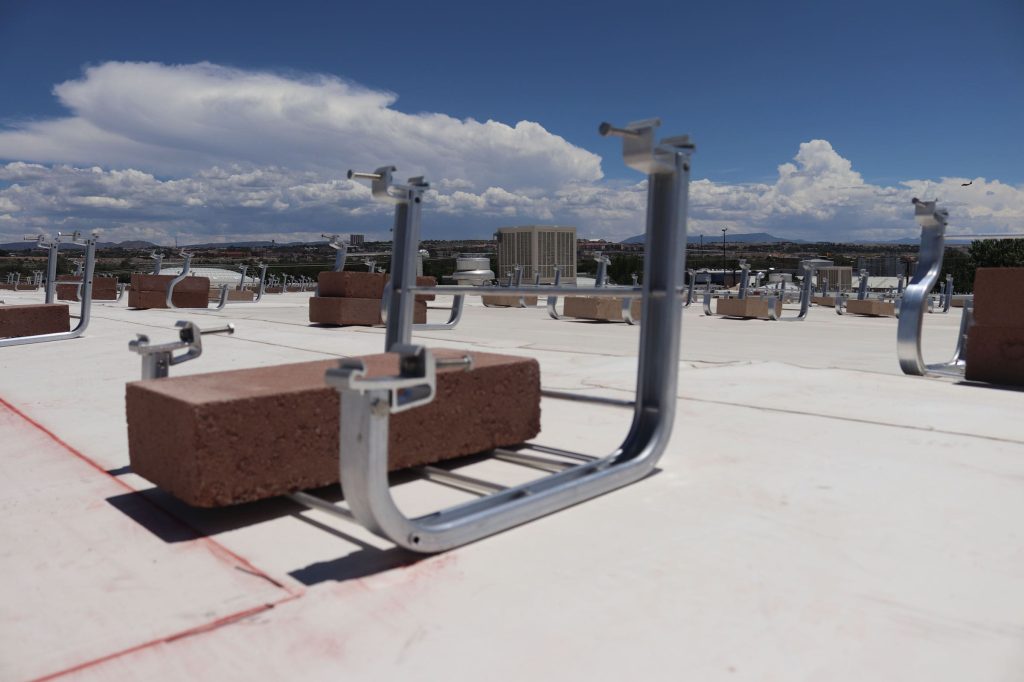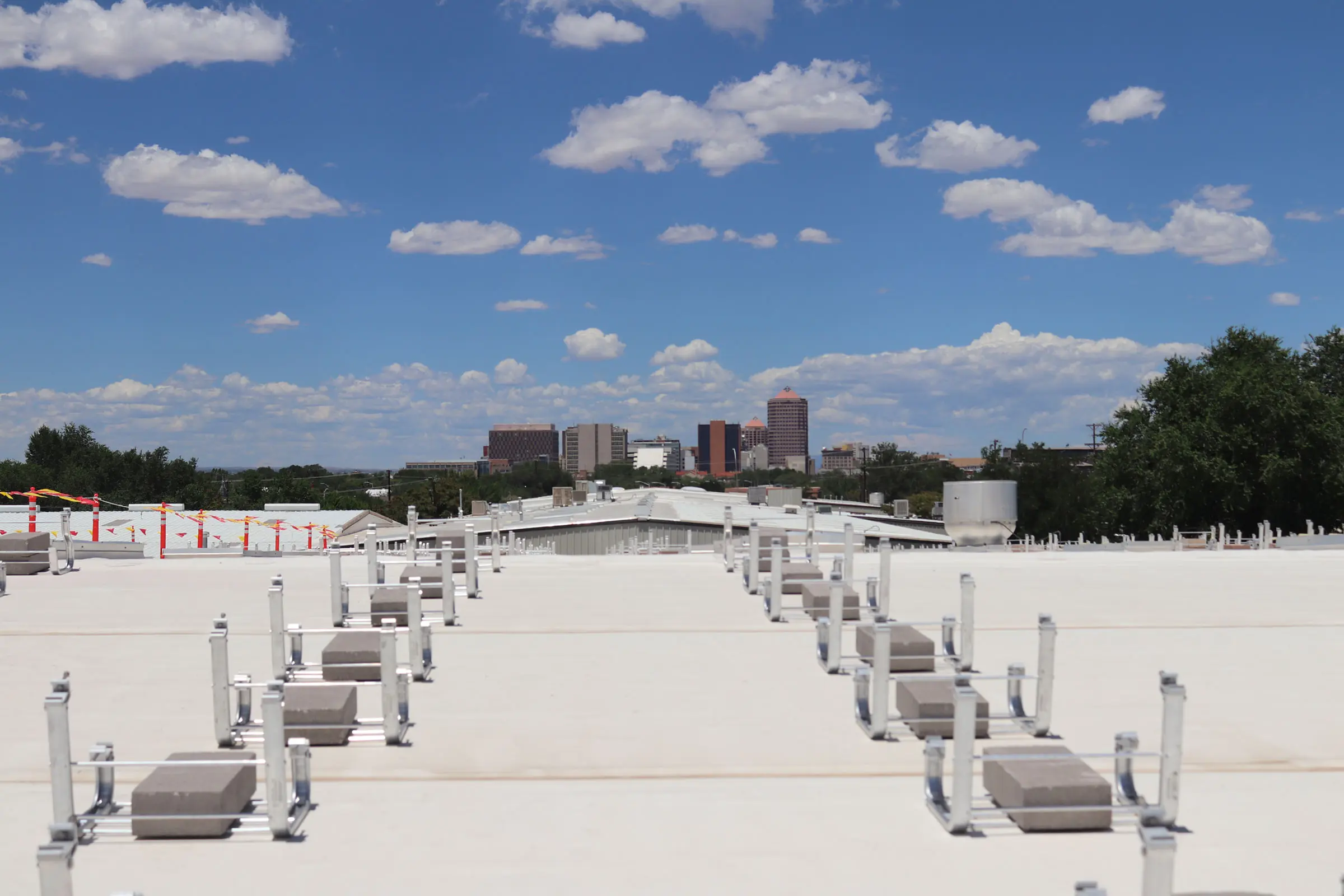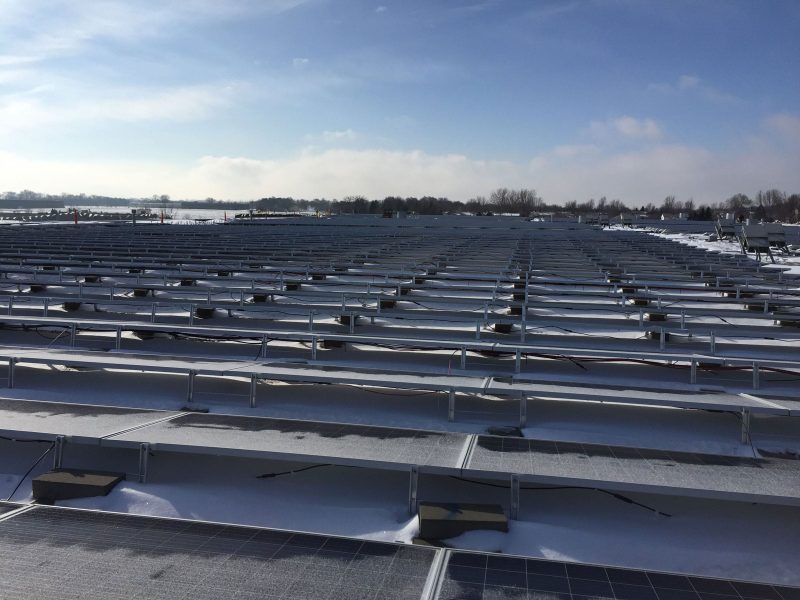Solar Safety Made Easy with UL3741 Compliant Mounting Solutions
SHARE THIS:

Solar Safety and Rapid Shutdown: A Scarce Solution to an Old Concern
Solar power offers a clean and viable energy solution for homeowners aiming to lower their electric bills or decrease their carbon footprint. However, for fire-rescue personnel, solar electricity presents a concerning safety dynamic. Firefighters must be aware of potential electrical hazards and be able to quickly employ protection measures to mitigate possible risks for first responders. Traditionally, fire-fighting standard operating procedures rely on disconnecting the power grid to counteract the dangers of electrocution. Since solar panels continue to generate electricity for as long as they are exposed to sunlight, the industry needed to standardize safety gates that addressed this concern.
Failure to address this PV safety issue could be a deal-breaker for potential customers, creating a bad reputation for solar installers, promoters, and manufacturers. So, it is prudent to ask what the solution is. Before UL 3741, the industry relied on module-level power electronics (MLPEs) to achieve rapid shutdown, a requirement solar professionals are familiar with since its first appearance in the 2014 National Electrical Code (NEC). The NEC introduced rapid shutdown requirements, aiming to quickly de-energize solar panels during emergencies. While seemingly logical, this decision had massive implications for the industry at the time, giving rise to some unintended consequences. The “plug-and-play” installation simplicity of solar arrays vanished, replaced by additional electronics on rooftops under each panel that could introduce new potential failure points.
When ideally considering system reliability and ease of installation, adding additional electronics to an array is a hard sell, especially in solar, where the conditions can be thermally challenging and vary seasonally.
In fact, Heliovolta, a third-party auditor, has officially stated in its Solar Builder magazine that the heightened utilization of mass-produced power electronics components such as MLPEs has introduced a statistically significant increase in failure points within U.S. rooftop solar systems over time. This surge inevitably leads to a greater occurrence of thermal events. What it means is that the incorporation of rapid shutdown system components may inadvertently contribute to these thermal events, further compromising system safety. This, in turn, necessitates a higher frequency of on-site firefighter interventions, presenting a paradoxical situation that appears rather counterproductive.
Scott Carman, an Operation and Maintenance worker at Paragon Solar, expressed in an interview with Solar Builder magazine:
“I feel that the well-intentioned additions to the rapid shutdown code tripled the number of connectors in a system, inadvertently creating more of a safety hazard it was meant to improve. The safest roof for a firefighter, after all, is the one they never were required to be on.”
Upon critical examination, it becomes evident that the code-based approach is an incomplete solution, proving to be inadequate in many cases:
- Increased Complexity: MLPEs added complexity to solar installations, and with additional electronics on rooftops, they could introduce more potential failure points.
- Cost Impact: MLPEs raise installation and equipment costs, making solar less attractive to price-conscious customers.
- Maintenance Woes: Solar technicians reported more service calls due to MLPE malfunctions or improper installation due to increased complexity.
What is UL 3741 — New Path Toward Risk-Based Safety Standards?
All these arguments and issues against module-level rapid shutdown—due to the lack of concrete data on firefighter risks and the potential downsides of MLPE—culminated in the introduction of UL 3741, an alternative provided in the 2020 NEC.
UL 3741’s implementation signified a significant shift toward data-driven safety standards for interaction with solar systems. The focus shifted from voltage limits to measuring the actual electrical dangers firefighters encounter during interventions. This shift in perspective assessed what shock hazards exist for emergency response personnel posed by a solar installation in worst-case conditions.
Underwriters Laboratories defined and worked toward eliminating these issues by collaborating with industry stakeholders such as the Sandia National Laboratories and the US Department of Energy. This risk-based approach then uses empirical data on shock hazards to define safety parameters. The presence of real-world hard data allowed UL 3741 to establish a repeatable testing methodology for consistent and verifiable PV hazard standards.

UL 3741 opened the door for innovative solar system designs. It allows systems with minimal or no MLPE to be code-compliant, thereby reducing installation complexity and cost—a major concern for the industry. However, this flexibility comes with its own robust protection requirements. For racking manufacturers, an UL 3741 certification means that they must ensure that all accessible wires and energized components in an array are shielded to mitigate any risk of exposure. Rigorous testing simulates firefighter interaction with equipment, ensuring a high level of protection in various scenarios, including those in which firefighters fall on PV equipment while holding tools.

Solar mounting systems that qualify for UL 3741 listing must follow these 3 steps:
- Ensure PV racking and inverter models have been certified and listed together.
- Design the PV array layout according to one of the 4 use cases to meet NEC requirements.
- Ensure wires are managed according to the racking-specific installation manual so that the system is installed correctly and safely.
Leadership in Safety and Compliance is Unirac’s Choice
Considering the history of solar energy safety standards, it is easy to identify UL 3741 as a watershed standard that positively impacts customers, whether commercial or residential. Now, on the application part: How can you guarantee they will receive the full value of their investment? The answer is straightforward: opt for UL-3741-compliant systems for a solar project.
Safety is a priority, and UL 3741 compliant systems must be your first choice.
Sounds very promising, right? Here’s the catch: the widespread adoption of this new standard within the solar industry has yet to fully materialize, at least to a significant extent. Manufacturers are still striving to achieve this golden standard—which is precisely where Unirac distinguishes itself. Unirac stands out by achieving UL 3741 compliance across our entire roof racking portfolio. Our hard engineering approach to product design and testing ensures that our systems are UL 3741-compliant, and your investment in solar with Unirac is not only safe and reliable but also future-proof. This commitment to safety demonstrates our proactive stance and innovative approach in the solar racking industry.Unirac’s leadership brings several benefits to you as well:
- Unmatched Selection: Unirac offers the most UL 3741-compliant racking and inverter combinations available.
- Installer Confidence: Installers can choose Unirac racking with the assurance of safety and compliance whether they are installing on pitched or flat roofs.
- Simplified System Design: A wider range of compliant options makes system design, selection, and installation easier. Unirac now offers residential UL 3741 solutions with TESLA POWERWALL paired with NXT UMOUNT, SOLARMOUNT, PUETO RICO TILT LEGS, NXT UMOUNT TILT LEGS and SOLARMOUNT TILT LEGS.
Unirac’s Portfolio of UL 3741 Certified Solar Mounting Systems
UL 3741 Compliant FLAT-rOOF Systems
UL 3741 FLUSH Mount & Tilt up Systems
- NXT UMOUNT
- SOLARMOUNT
- PUERTO RICO TILT LEGS
- NXT UMOUNT TILT LEGS
- SOLARMOUNT TILT LEGS
A New Solar Vision for All Stakeholders
UL 3741 represents a monumental leap forward for the solar industry, benefiting all involved, including designers, engineers, and installers. With a comprehensive view, we can easily discern the profound impact the standards have on these stakeholders:
- Enhanced Safety: UL 3741 sets a clear data backed benchmark for rapid shutdown, reducing their liability concerns and ensuring solar designs prioritize safety.
- Simplified System Selection: With a wider range of UL 3741-compliant components, selecting safe and compatible equipment becomes easier.
- Customer Trust: Using UL 3741-compliant systems allows installers to confidently guarantee their work meets the latest safety standards, building trust with customers.
- Simplified Installation: Compliant components ensure a smoother installation process, potentially reducing installation time and complexity.
- Competitive Advantage: Offering UL 3741-compliant systems can give a competitive edge in the market, showcasing commitment to safety and quality.

The question that persists is: How can this be achieved, considering UL 3741 is a relatively new standard necessitating proper training and guidance for racking installation? While reviewing all related UL standards is one approach, it’s not entirely practical; the learning curve is high. This is precisely where Unirac, as a leading racking manufacturer, steps in. Drawing from the extensive experience with our partners, we understand the necessity for training. That is why we offer comprehensive training modules focused on our UL 3741-listed racking systems. These certifications equip you with the knowledge to seamlessly integrate our products into a compliant solar array. Completing our training will ensure you will gain in-depth knowledge of UL 3741 requirements as they pertain to our racking systems. This empowers you to answer customer safety questions confidently and efficiently, further solidifying your expertise.
Embrace UL 3741 for a Safer and More Sustainable Solar Industry
Ul 3741 can be incredibly complex and confusing considering the details, simulations, and empirical evidence it contains. Nonetheless, what we can be confident about is that it is taking the industry in the right direction. For a long time, the sector has been thrown off track due to a lack of empirical data and research. We are now a lot more liberated, with multiple options available to go solar. Admittedly, like most new things, progress will require time and patience, yet strides have already been made, with manufacturers such as Unirac adopting UL 3741 for the majority of its products.
The imperative now is to maintain this momentum and enhance product safety through better engineering and rigorous testing. Additionally, all stakeholders, including installers, bear the responsibility of educating customers about the benefits and necessity of utilizing UL 3741-listed systems to ensure the safety of solar installations. With its consistent efforts and support, Unirac remains steadfast in its belief that every advancement contributes to the sustainability and resilience of the solar industry—after all, we believe Better Solar Starts Here.
